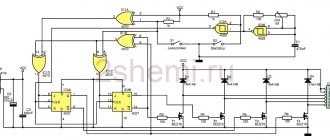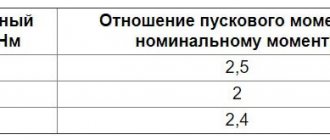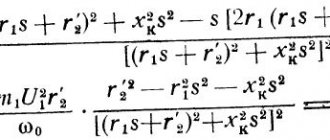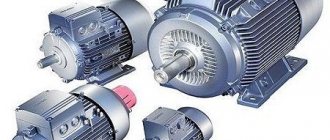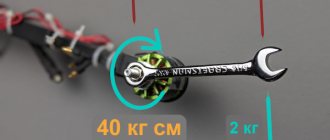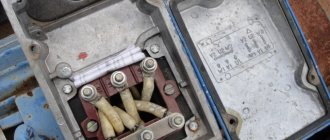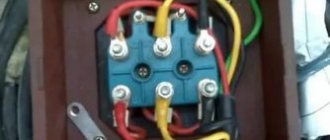Spread the love
To understand which stepper motor you need for a CNC machine, you need to know the requirements for torque and rotational speed (speed). The best stepper motor will be able to provide the required torque and still be fast enough. It is very easy to overpay for a stepper motor that is too large or choose a weak one. This guide can help you select the stepper motor you need for your CNC application.
As a CNC technician and consultant, I am often asked for stepper motor recommendations from people who want to make a CNC or replace a motor in an existing CNC.
I give them my best options depending on the stepper motor category:
- STEPPERONLINE NEMA 17 Stepper Motor
- STEPPERONLINE NEMA 23 Stepper Motor
- TOAUTO Integrated Closed-Loop NEMA 23 Stepper Motor with Driver
- Hobby-Unlimited NEMA 34 Stepper motor
Here are the best stepper motors available today [2021] for CNC applications.
| Stepper motor | Peak current | Holding torque |
| 1. Stepper motor STEPPERONLINE NEMA 17 | 2A | 84 ounces inch |
| 2. Usongshine NEMA 17 stepper motor | 1.5 A | 60 oz. |
| 3. Stepper motor STEPPERONLINE NEMA 23 | 2.8 A | 178.5 ounces inch |
| 4. Stepper motor STEPPERONLINE NEMA 23 (3A) | 3.0 A | 269 ounces to inches |
| 5. NEMA 23 4.2A high torque stepper motor | 4.2 A | 425 ounces inch |
| 6.TOAUTO NEMA 23 closed loop stepper motor | 3.0 A | 283 ounces inch |
| 7. RATTM NEMA 23 Stepper Motor Kit | 4.0 A | 425 ounces inch |
| 8. Hobby-Unlimited NEMA 34 Stepper Motor | 6.0A | 1200 oz. |
Best Stepper Motors for CNC
Best NEMA 17 Stepper Motors
STEPPERONLINE NEMA 17 Stepper Motor is the best high precision stepper motor.
NEMA 17-2A Stepper Motor for CNC
| Rated current | 2A |
| Holding torque | 84 ounces inch |
| Compatible Driver | TB6600 or DM542T (and higher) |
Quick Specifications
The STEPPERONLINE NEMA 17 motor is probably the most popular NEMA 17 stepper motor today, and for good reason. The holding torque on this motor is 84 ounces per inch, which is quite high for a NEMA 17 motor and suitable for most desktop CNC and laser engravers. In fact, it is also ideal for 3D printers. For comparison, most 30 x 18 desktop CNCs on the market today, such as the Sainsmart 3018 CNC, run stepper motors with a holding torque of 35 oz/in and a current rating of 1.3 A. Thus, the torque is more than twice that than popular desktop CNCs.
This stepper motor for CNC router is a great choice for most hobbyists. It can handle a maximum current of 2A per phase. To run this stepper motor, you need a stepper driver that has its maximum current value higher than 2A. The most popular and cost-effective ones that meet this criterion are the TB6600 and DM542T. With this engine, you have the potential to create a desktop CNC that is more powerful and smoother than any of the sub-$500 desktop CNCs on the market.
However, you also need to map the correct controller to this. Make sure you use a stepper driver such as TB6600 or better with this 2A motor. I say this because many budget GRBL CNC controllers on the market have built-in stepper motor drivers, and most of them are either A4988 or DRV8825.
Technically you can run this motor with an A4988 or DRV8825 stepper driver at low current, but you won't be able to get the full performance out of it. If you try to run it with these 2A drivers, expect it to burn out after a while.
For those wondering how much torque this stepper motor will generate at different RPMs at 24V, this may help - Torque V/S Chart for NEMA 17 Stepper Motor.
This motor has a pitch angle of 1.8 degrees, and the pitch angle accuracy of this motor is +/- 5%. The inductance of this motor is 3.0 mH, which is less than the recommended maximum inductance of 5.0 mH. This helps achieve good torque even at higher revs. It also has an ambient temperature rating of 10-50°C and a maximum temperature rating of 80°C.
Almost all users of this motor report temperatures below this rating and only get a little warm when running at 1A. This motor's excellent heat management helps avoid the skipped steps that happen when a stepper motor gets too hot. This stepper motor comes with clear documentation of which of the four wires goes where, and this is really helpful if you are not an expert.
If you need multiple NEMA 17 motors instead of one, I suggest you choose this set of 5 NEMA 17 motors for bulk discount.
BEHIND:
- Highest torque among NEMA 17 motors.
MINUSES:
- Requires TB6600 stepper driver or better.
Usongshine NEMA 17 Stepper Motor
Usongshine NEMA 17 1.5A Stepper Motor
| Rated current | 1.5 A |
| Holding torque | 60 oz. |
| Compatible Driver | A4988 or DRV8825 (and higher) |
Brief Specifications
The Usongshine NEMA 17 Stepper Motor with 60oz holding torque is a durable bipolar stepper motor. To run this stepper motor, you will need a stepper driver with a maximum current rating greater than 1.5A. The most popular ones that meet this criterion are the A4988, DRV8825, and TB6600 drivers. If you have a controller with built-in stepper motor drivers, just make sure it has an A4988 driver or better (in terms of amps). Whatever stepper driver you choose or already have, make sure that the current flowing from it to the motor should be less than the rated current of the stepper motor, i.e. 1.5A.
The cable length of this motor is 1 meter with four wires, which is standard for bipolar stepper motors these days. It is a 1.8 degree stepper motor which means it will take 200 steps for every full rotation. The step angle accuracy of this motor is +/- 5%, and most users report minimal missed steps unless they are constantly running at maximum amperage.
The circuit boards in the engine bay have been redesigned from previous versions to provide smoother motor movement. The entire surface of the motor is coated with epoxy resin, which gives it higher stability and lower noise levels. Usongshine motor, like its body, also features high stability, uniform running speed and low noise. Copper coils used in the silicon steel motor and rotor dissipate heat evenly. The silicon steel rotor along with the rubberized surface ensures stable performance, low noise and longer product life.
This motor operates at around 50°C under normal load and heats up to 70°C at a maximum current rating of 2A. The manufacturer does not specify the inductance of this motor, but it is low, which gives this motor reasonable torque even at higher rpms. Low resistance also increases the thermal conductivity of the motor, providing both better performance and reduced heat loss. Overall, this NEMA 17 stepper motor is a reliable option for any desktop engraver, laser engraver, or 3D printer.
Pros:
- Good compatibility with budget stepper drivers and controllers.
Minuses:
- Lower torque compared to StepperOnline NEMA 17 84 oz motor.
DIY ball motor driver
If desired, a driver for a ball motor can be made independently, but subject to the purchase of the necessary equipment. First, decide what type of shield you have in your hands.
There are only two windings in a bipolar device, so the number of outgoing wires will be four. In a unipolar motor there are more windings, therefore the number of leads is corresponding.
The bipolar motor control circuit consists of several elements:
- Pulse generator.
- Switch.
- Power switches that control motor windings.
The generator is assembled on the basis of a 555 microcircuit according to the usual scheme. Each pulse issued by the generator moves the motor one step.
The switch is assembled on the basis of the 4013 chip, and the power part is L239D (driver chip).
Two batteries are used as a power source, providing a voltage of five volts. After turning on the power, the generator emits pulses, the frequency of which can be changed by adjusting the resistance of the generator.
Depending on the circuit used, you can use reverse or connect the motor without it.
To ensure reverse, the same chain is assembled with the difference that at the output of the commutator it will be possible to change the polarity on the windings. In other words, when the connection principle changes, the direction of rotation also changes.
The reverse circuit uses two FAN 8082 brushed motor drivers. After turning on the motor, you can press the switch to rotate in a different direction.
Connection diagrams.
Instead of a generator, you can connect a tact button, with which you can easily avoid chattering of contact groups. If desired, you can even count the number of steps of the motor if necessary.
Features of the first L293D driver (for the first circuit):
- Device voltage is from +5 to +15 V.
- Board size 60x21 mm.
- The maximum current is 1.2 A, but in practice, at a current greater than 0.5 A, the circuit begins to heat up.
- Connected pins - 4, 5, 12, 13.
Features of the second FAN 8082 driver (for the second circuit):
- Device voltage is from +5 to +15 V.
- Maximum current - 1.6 A.
Unlike the previous device, this type of driver copes better with the load. If desired, as noted above, you can use a contact bounce absorber.
Best NEMA 23 Stepper Motors
STEPPERONLINE NEMA 23 2.8A CNC STEPPER MOTOR
Stepper motor for CNC NEMA 23 2.8A
| Rated current | 2.8 A |
| Holding torque | 178.5 ounces inch |
| Compatible Driver | TB6600 or DM542T (and higher) |
Brief Specifications
The STEPPERONLINE NEMA 23 Stepper Motor is overall the best choice among NEMA 23 stepper motors if you are looking for a motor that balances price and torque. The bipolar motor produces 178.5 ounces of torque and has a fixed pitch angle of 1.8 degrees. This stepper motor can perform most of the tasks required for a DIY CNC router that cuts wood, plastic, aluminum and PCBs.
As a reference, the popular Openbuilds Lead CNC (size 60 x 60 inches) has a 175 ounce NEMA 23 stepper motor, which is very close to this stepper motor. Most 7-inch lathes and small milling machines like the benchtop Sherline operate at 170-280 ounces of torque. It has a resistance of 0.9 ohms and is rated at 2.8 A per phase.
The 57x57x56mm case is made from a mixture of steel, copper and aluminum. This ensures motor durability as well as lighter weight than NEMA 23 motors of similar torque. The StepperOnline NEMA 23 motor weighs 1.54 lbs (700 g). The motor can also run at 1000 rpm at idle speed and is generally highly efficient in cutting a variety of materials.
You can run this motor using the TB6600 driver or the DM542T driver. Of course, you can use even better drivers if required. The control voltage required to operate this stepper motor is 24-48V, which is standard for most NEMA 23 motors. It has 4 lead wires and a 300mm lead wire. The inductance of this motor is 2.5 mH, which is quite low, giving it high torque even at high rpm.
BEHIND:
- Light (700 g)
STEPPERONLINE NEMA 23 3.0A Stepper Motor is the best high speed stepper motor.
STEPPERONLINE NEMA 23 3.0A Stepper Motor is the best high speed stepper motor.
| Rated current | 3 A |
| Holding torque | 269 ounces to inches |
| Compatible Driver | TB6600 or DM542T (and higher) |
Quick Specifications
This StepperOnline NEMA 23 motor is the same size (form factor) as the 2.8A NEMA 23 motor above. However, it has a maximum current of 3A per phase and a holding torque of 269 ounces. That's more than the 178.5 ounces in a 2.8A NEMA 23 motor. The question is, do you need it? It's hard to tell if you need this without knowing how fast you want your machine to cut.
The CNC's movement speed is dependent on the feed rate and is dependent on the RPM of your stepper motor. The problem is that the torque you get from the stepper motor drops off linearly as you increase the RPM to make the router move faster. For this NEMA 23 motor, you still get about 80% of its maximum torque, which is about 226 ounces per inch at 400 RPM, when running from a 48VDC power supply.
Torque graph
If you need more than 400 RPM and need more than 250 ounces of torque even at that speed, I suggest you move up to the next higher torque engine on this list. This motor also has a higher resistance (1.12 ohms). It can also work with TB6600 driver or DM542T stepper motor driver.
The control voltage required to operate this stepper motor is 24-48V, which is standard for most NEMA 23 motors. This motor also has the same 4 pins but has a longer shaft length of 21mm compared to the previous NEMA 23 motor. which has a length of 20.6 mm.
BEHIND:
- Provides higher torque
- Affordable price
NEMA 23 4.2A High Torque CNC Stepper Motor - Best High Torque Stepper Motor
Stepper motor for CNC NEMA 23 4.2A
| Rated current | 4.2 A |
| Holding torque | 425 ounces inch |
| Compatible Driver | DM542S (and higher) |
Brief Specifications
This is truly a monster of a NEMA 23 motor and a high torque stepper motor. Rated at 4.2 amps per phase and 425 ounces of torque, this stepper motor is typically the most powerful of all CNC routers that cut materials such as wood, plastic, aluminum, and circuit boards. You can only go higher than this if you want to seriously work the metal. Even then, it may not be necessary.
Many large lathes (10 x 22 or 10 x 32 inches) and heavy benchtop mills (X and Y axis) have torque ratings in the 400-600 oz./in. range. This engine has a truly impressive torque vs. rpm curve.
Torque versus speed curve
If you look at the curve, it delivers 283 ounces per minute even at 360 RPM when running on a 36V power supply. You can expect even more power with 48VDC. This stepper motor can run at moderate speeds using the DM542T driver, while the TB6600 may be too weak for this motor. If you really want to push this motor to its limit, which is 4.2A, you should get a driver that can handle at least 5A, such as the DM542S (5.0A), or the DM556 (5.6A), or Trinamic TMC5160 (included in xPro V5).
The motor has four wires with a pitch angle of 1.8 degrees. The length of the leads on the wires is 400 mm (40 cm). As you might expect, this motor is quite heavy for NEMA 23. It weighs 4 pounds (1.8 kg). The supply voltage for this motor should be in the range of 24-48 VDC. This motor has a maximum temperature rating of 80°C. If it gets hotter, you may need to update your stepper motor driver. Overall this is what you need if you want absolute NEMA 23 sized muscle.
BEHIND:
- Very high torque even at high speeds.
- Almost never misses a step even after long use.
MINUSES:
- Heavy and requires 5A drivers for full performance.
Integrated Nema23 Closed Loop Stepper Motor with TOAUTO Driver - Best Closed Loop Stepper Motor
TOAUTO NEMA 23 Closed Loop Stepper Motor
| Rated current | 3 A |
| Holding torque | 283 ounces inch |
| Compatible Driver | Built-in driver |
Brief Specifications
The TOAUTO NEMA 23 Stepper Motor is a good choice if you need a closed loop stepper motor instead of an open loop stepper motor. The feedback stepper motor has a high holding torque of 283 oz/in. A 36V, 5A driver is included with the motor, so you don't have to search for a compatible stepper driver. All motors listed before this motor are open loop motors. Open loop motors suffer from a lack of feedback from the controller.
The biggest benefit of choosing a stepper motor with feedback is that it provides feedback to the controller similar to a servo motor at almost 1/3 the cost of a servo motor. Open loop stepper motors can sometimes skip steps, especially when running at current limits when the motor gets too hot. The additional feedback that is given to the controller in a closed-loop stepper motor gives it the ability to either correct its position or stop after each movement if steps are missed. If you are doing mission-critical work where missing a step could ruin your workpiece, then a closed-loop stepper motor may be the best option for you. It alerts you when you miss a step and stops your movement so you can make changes to your input.
A closed-loop stepper motor also runs cooler than a torque-equivalent open-loop stepper motor because it senses the actual load and delivers only the current needed. At the stop position (0 rpm), it almost stops supplying current, resulting in no heating, while an open loop stepper motor runs hottest at the stop position.
Real-time synchronization of the hybrid step servo system provides feedback for very fast starting and stopping, zero speed stopping stability. Position tracking technology used in a real-time closed-loop system ensures no loss of synchronization. It works by installing a position sensor behind the stepper motor. The position sensor ensures maximum step or positioning accuracy. The encoder also applies encoding and filtering techniques to overcome the resonance problem. This results in smooth and precise movement at low speeds and eliminates the noise and vibration problems faced by traditional stepper motors.
The hybrid servo drive system uses a current control method that results in a 30% increase in speed and improves effective torque by 70%. The combined effect is high torque operation at high speed. This motor driver system requires no additional setup and, like other stepper motors, operates on a plug-and-play basis.
BEHIND:
- Location tracking technology provides better real-time synchronization
- Comes with stepper driver
- Doesn't get very hot
MINUSES:
- A NEMA 23 motor will have a 0.25" shaft while this stepper motor has a 0.327" shaft and hence it is more similar to NEMA 24.
- More expensive than other NEMA 23 motors.
NEMA 23 Stepper Motor Kit
NEMA 23 Stepper Motor Kit
| Rated current | 2.8-4 A |
| Holding torque | 200 -425 ounces inch |
| Compatible Driver | FMD2740C (and higher) |
Quick Specifications
If you need stepper motors for your CNC and don't want to worry about finding compatible stepper drivers and power supply, then this kit is for you. This CNC stepper motor kit includes 4 powerful NEMA 23 stepper motors, FMD2740C stepper driver or equivalent, controller, power supply and breakout board. The kit includes a NEMA 23 stepper motor that is capable of producing 425 oz/in holding torque with 5% step accuracy. Resistance and inductance precision of 10 and 20 percent respectively ensures that the motor follows a fixed step angle of 1.8 degrees.
The switching power supply is rated at 400W and is a single output producing 36V/9.7A, while the input is 100-120VAC or 200-240VAC. The CNC USB breakout board allows for easy USB connection. The board features a high-performance motion controller that provides exceptional motor control. E
BEHIND:
- Everything is included in one package and there is no need to check for additional compatible drivers and consumables.
Advantages and disadvantages
Before using a stepper motor, you need to study its pros and cons. They make it easier to judge the relevance of using equipment for solving problems of varying complexity.
Pros:
- Accuracy. When voltage is applied to certain windings, the rotor rotates at a strictly defined angle.
- Long service life. If you take care of the equipment, carry out periodic checks and restoration procedures, the stepper motor can last no less than the machine.
- Often used as a cheaper alternative to servo drives. It is often used to automate various types of units.
- Stability. The SD operates under different loads and is not afraid of fluctuations in this parameter.
- Ease of use. Controlling a stepper motor does not require special knowledge. Even a beginner can understand the principle of operation and rules of use.
- Excellent characteristics: support for maximum torque (even at low speed), clear locking after stopping.
- Easy to repair. It has a simple design, so there are no difficulties with maintenance and restoration.
Minuses:
- Low moment. The motors cannot boast of sufficient torque when the rotation speed increases. The only way out is to improve the dynamic parameters using special PWM drivers.
- Vibrations. Due to the discreteness of the step, vibrations arise, which inevitably lead to a decrease in the torque and the appearance of resonances in the system.
- Risk of mispositioning. This parameter can be changed when the load increases above the permissible parameter.
- Little efficiency. A stepper motor uses a lot of energy even at minimal load.
- Difficulty gaining speed. The unit has difficulty gaining momentum after a momentary overload.
- Risk of rotor slippage. This is a known problem that occurs when the load increases above the permissible value. To solve this problem, you can install a sensor or increase the motor power.
This is not an exhaustive list of the weak and strong characteristics of a stepper mechanism, but it is sufficient to make a decision.
Best NEMA 34 Stepper Motors
Hobby-Unlimited NEMA 34 Stepper Motor - Best NEMA 34 Stepper Motor
NEMA 34 Stepper Motor
| Rated current | 6A |
| Holding torque | 1200 oz. |
| Compatible Driver | DM860T (and above) |
Quick Specifications
This is a NEMA 34 stepper motor with 1200 ounces holding torque and a maximum current rating of 6A per phase. It has three times the holding torque of the previous 4.2A NEMA 23 motor. This motor is suitable for the Z-axis of heavy-duty benchtop milling machines. One motor of this size can theoretically lift a weight of 75 pounds, and this stepper motor is the definition of a heavy duty stepper motor.
The only reason you would need this motor for a DIY CNC router is if you want to do full-time production work and want the little extra benefit you get from higher power. However, the extra power comes at a cost. You will need larger mounting brackets for this engine.
Also, check which application you are using the motor in has room for an 86 x 86mm x 114mm long motor. If you need to use such a powerful motor, make sure the rest of your mechanical system can handle it. You need a very rigid and strong chassis that can handle the high torque produced by this engine. If you run this on a weak mechanical system that can't handle the load, the entire setup could collapse and cause damage. To run this motor, you will need a driver capable of delivering more than 6A.
Driver DM860T stepper is a good choice for this motor. It is designed to operate NEMA 34 and NEMA 42 motors with a current range of 2.4-7.2 A and a power supply of 18-80 VAC or 36-110 VDC. This NEMA 34 motor has four lead wires. It also weighs 7.5 pounds (3.4 kg). The heavy-duty HobbyUnlimited stepper motor features a steel frame and is built to last. The motor delivers a high holding torque of 1200 oz/in from a long 14mm shaft with a 5mm keyway. The motor has a fixed pitch angle of 1.8 degrees and a pitch accuracy of 5 percent. The engine also operates in ambient temperatures between 20°C and 50°C (approx.).
BEHIND:
- High torque
- Rugged housing designed to last a long time
MINUSES:
- Heavy - 3.6 kg
Main characteristics
When choosing a stepper motor, you need to look at its parameters.
Let's highlight the main points:
- Number of complete steps. The smoothness and accuracy of movement, as well as resolution, depend on this indicator. In modern models, the number of complete steps should be in the range of 200-400.
- Winding resistance. Indicates the voltage that the unit can produce.
- Angle of discrete movement. Calculated by dividing 360 degrees by the number of individual movements per revolution. The optimal indicator is from 0.9 to 1.8 degrees.
- Phase inductance. Determines the rate of current increase, which is important during accelerated shaft rotation.
- Breakdown voltage. The maximum parameter at which the integrity of the insulating layer is violated and the safety of use is determined.
- Insulation resistance. Measured between each winding and the casing.
- Rated current. The highest parameter at which safe operation of the unit is possible.
- Permissible voltage (“constant”). The measurement is carried out on turns. Sometimes this parameter is not indicated, but in this case it can be calculated using Ohm's law.
It is important to pay special attention to one more parameter—moment. It comes in several types:
- holding: relevant in case of a complete stop and two-phase current supply;
- torque: depends on the rotation speed, the maximum value for the unit is indicated;
- locking: necessary to rotate the shaft in the absence of power;
- inertial: the lower this indicator, the faster the engine accelerates.
A comprehensive analysis of characteristics allows you to more accurately select a device for solving specific problems.
What to consider before choosing a stepper motor for your CNC
- NEMA Sizing: Generally, as NEMA size increases, motor power and torque increase. However, check the holding torque as this is possible with NEMA 17 motors.
- Repurchase: Stepper motors are easy to repurchase. Any excess power in terms of torque beyond the safe limit is a waste that will never be used. You'll need to spend more on the power supply, stepper driver, and controller to get extra torque that you don't really need.
- Torque and RPM : First estimate the torque and RPM required for your application, then determine everything else you need, such as stepper drivers, power supply, and controllers. As the speed of the stepper motor increases, the torque in the stepper motor drops almost proportionally. This can be compensated for by supplying a higher input voltage through the stepper driver. However, this means that you need to manage the increased heat with some kind of cooling mechanism.
- Inductance : Motors with low inductance have better torque at higher RPMs. Generally, motors with inductance below 5 mH are preferred.
- Heat: The more current in the motor, the more heat. Typically, every 10% reduction in current results in a 20% reduction in heating.
- Power Required: Let's assume you have four stepper motors requiring 2.8A. This means a total of 4 x 2.8 = 13.2A required. If the rated voltage is 24V, then the rated power will be V*I= 24 x 13.2 = 316.8 W. So here in this case a 350W 15A power supply is perfect.
Principle of operation
Depending on the type of unit, its design features may differ, but the general principle of operation is almost unchanged. Thus, the stator has four windings located at a 90-degree angle.
As soon as voltage is applied to the first winding, the rotor moves to the above angle. When voltage is applied to the second, third and fourth windings, the shaft continues to rotate until it completes a full circle. Then the process is repeated from the beginning.
If you want to change the rotation order, you need to apply pulses in the opposite direction. For convenience, users can control the SD and change its characteristics taking into account the specifics of use.
FAQ
What size stepper motor should I use for my CNC router?
Stepper motors used in CNC routers are typically NEMA 17, NEMA 23, or NEMA 34 stepper motors with holding torque ranging from 30 ounces (NEMA 17) to 1000 ounces (NEMA 34).
- NEMA 17 stepper motors are used in CNC engraving machines and small desktop CNC routers.
- NEMA 23 stepper motors are used in most hobbyist CNC routers.
- NEMA 34 stepper motors are used in industrial CNC routers and heavy duty desktop CNC machines.
The NEMA number refers to the stepper motor frame size and does not directly indicate the mechanical capabilities of the motor.
Which is better, servo drive or stepper motor?
Servo motors are better suited for applications that require high precision and high torque even at high speeds. However, servo motors are more complex, closed loop, and expensive compared to stepper motors. Stepper motors are open loop and much cheaper. Stepper motors are ideal for amateur and non-industrial use.
How long do stepper motors last?
Stepper motors typically last about 5 years. Most stepper motors are tested to last for 10,000 hours, and given a typical use case, they can last 5 years.
What are multi-axis controllers
In simple words, multi-axis controllers are modern devices with built-in microprocessors and an integrated programmable circuit.
They are small in size and easy to operate. They are used for precise positioning of units along two or more axes.
The main area of application is the automation of a machine stepper motor equipped with multi-axis electric drives. Their special feature is the support of multiple languages and the ability to manage online.
Controller Features:
- isolated digital inputs/outputs;
- high level of productivity;
- support for slave/master devices;
- option for remote control of the controller;
- interpolation support (circular, linear);
- a large set of digital and analog inputs/outputs, Internet ports and PWM outputs.
Popular models:
- PoKeys57CNC is a CNC controller with eight axes for Mach3 and Mach programs. Its feature is that it supports work via a USB and Ethernet interface. Standard STEP and DIR signals are used for control; up to eight stepper-type drivers are provided. The model is combined with encoders, a hand-held control panel, an LCD display, and limit switches. There are two relay and four transistor outputs, the ability to increase the number of outputs, Modbus TSP support, etc.
- Leadshine SMC6480 is a controller designed for microprocessor-based position control. Its structure includes a logical integrated circuit designed to send pulses, control the acceleration and deceleration process, and process inputs and outputs. The device is capable of reproducing pulses with a frequency of up to 5000 kHz and can withstand interpolation of up to four axes (linear) and up to two axes (circular). Individual analog and digital inputs/outputs, manual input and PWM output are provided.
Leadshine SMC6480 controller
In addition to multi-axis controllers, you can find other devices, for example, plasma heights. They monitor the presence of a working plasma arc and send a command to the main CNC board to move the torch.

